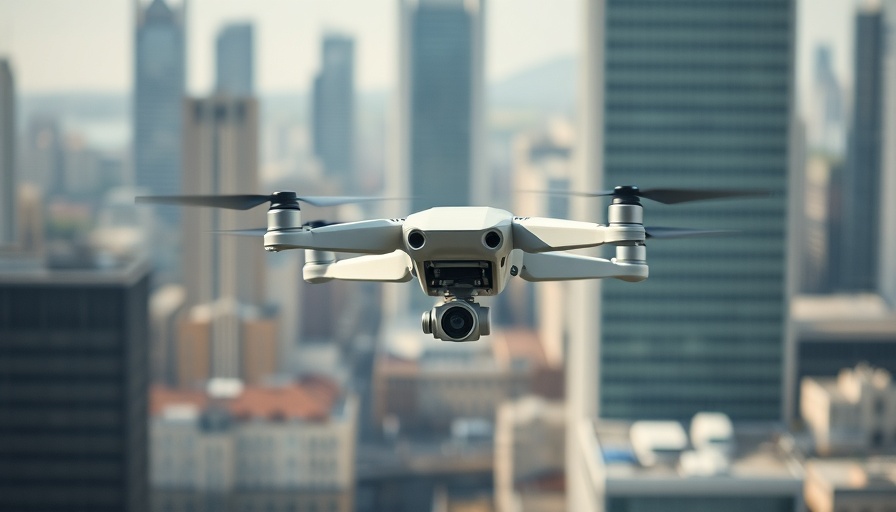
The Rise of Drones in Healthcare Construction
In the rapidly evolving world of construction, drones have emerged as a revolutionary force. Their utilization brings unprecedented efficiencies and cost savings, especially within the healthcare sector. Nevertheless, healthcare facilities managers face significant concerns when incorporating drones into construction projects, particularly regarding safety and patient privacy.
Addressing Privacy Concerns in Hospital Environments
One of the foremost worries associated with drone deployment around hospitals is the protection of patient privacy, especially given the strict requirements of HIPAA regulations. Healthcare facilities are required to ensure that no unauthorized images are captured that could compromise patient confidentiality. This necessitates the establishment of stringent data privacy protocols, including live-monitoring of drone footage by hospital representatives to prevent breaches of privacy.
Furthermore, in urban areas where hospitals are often located, the risk of unauthorized drone activity increases, as these facilities frequently find themselves near restricted air space conditions. Managers must understand the Federal Aviation Administration (FAA) regulations and navigate any potential complications that arise from helicopter landing zones associated with emergency medical transport.
The FAA Approval Process: What Managers Should Know
Healthcare facilities managers must possess a comprehensive understanding of the FAA's approval process before proceeding with drone operations. Obtaining authorization typically involves submitting a request that includes a detailed plan covering flight paths, maximum altitudes, and nearby restricted airspace. This process may take anywhere from several days to weeks, depending on the classification of the airspace.
As the drone operation process evolves, it is critical for facilities managers to work closely with skilled drone pilots who are already familiar with navigating these necessary approvals. Ensuring compliance with safety protocols is paramount and can significantly impact the success of the project.
Safety Protocols: Protecting Patients and Staff
Effective safety measures not only safeguard patient privacy but also ensure the safety of individuals on the ground. Drones are prohibited from flying directly over individuals; thus, hospital management must coordinate effectively with local authorities, security teams, and hospital staff. Communication is vital to inform those on-site about scheduled drone operations, alleviating any potential misunderstandings.
Alongside this, hospitals may implement temporary sidewalk closures or create restricted zones in collaboration with security personnel. These practices can improve both operational safety and compliance with FAA regulations, establishing an environment conducive to effective drone utilization.
Best Practices for Utilizing Drones Efficiently
By integrating drones into inspection methodologies, healthcare facilities can markedly reduce the impact of traditional manual processes. For example, manual façade inspections often demand extensive time and resources, requiring workers to navigate intricate setups that disturb busy hospital operations. Conversely, drones can expedite these inspections, delivering results with minimal disruption and at significantly reduced costs.
Furthermore, when establishing drone operations, healthcare managers should foster comprehensive communication channels with staff to ensure informed decision-making. Pre-emptive notifications about drone usage not only enhance safety but also ameliorate any apprehension from patients or staff who may notice aerial activities.
h2>A Vision for Future Drone Applications in HealthcareLooking forward, the potential applications of drone technology in healthcare construction and facility maintenance are vast. Innovative uses include delivering vital medical supplies and potentially assisting in emergency operations. Yet, all future implementations must prioritize both the privacy of patients and the safety of staff, creating a balanced approach to technology in healthcare.
As technology continues to advance, understanding and applying the best practices of drone operations will be vital for those in the healthcare industry. With the right framework, including adherence to regulations, structured communication, and diligent planning, drones can be leveraged to create significant benefits in healthcare facility management that translate to cost efficiency and improved patient care.
Conclusion
In summary, by actively addressing common concerns around safety and patient privacy and demonstrating a commitment to compliance, healthcare facilities can unlock the transformative potential of drone technology. This requires collaboration, foresight, and a proactive approach to utilizing innovation in ways that reinforce the core values of healthcare.
 Add Row
Add Row  Add
Add 






Write A Comment